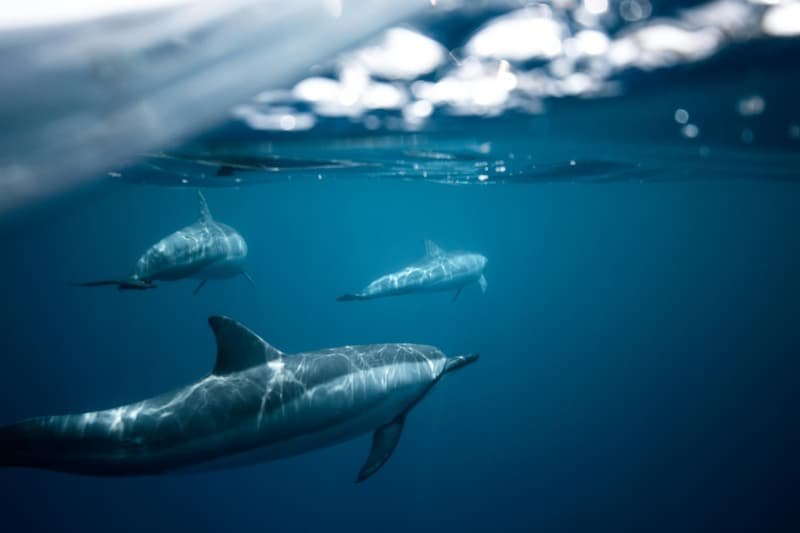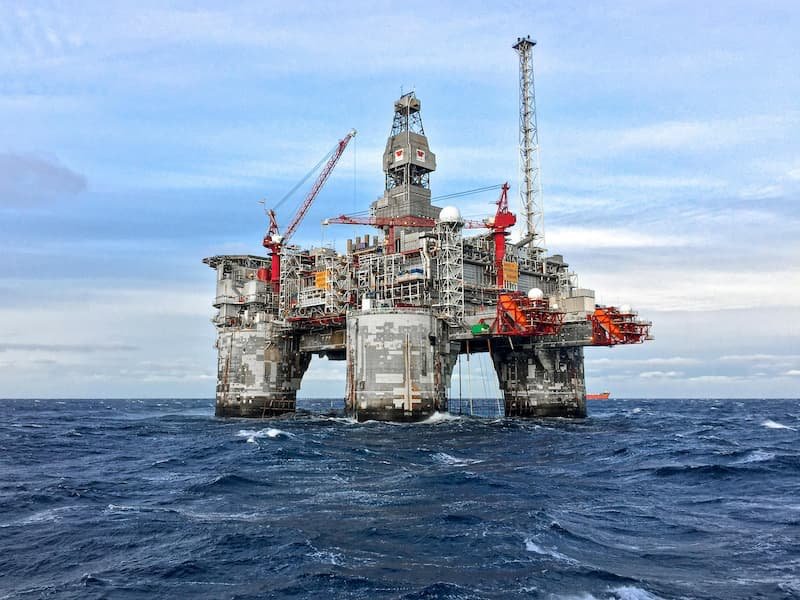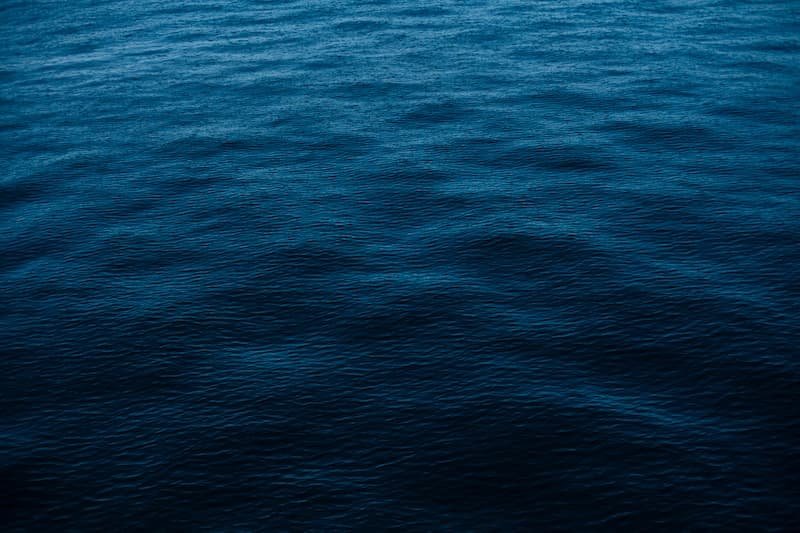
 Olivia Møller
Freediver - Activist - Explorer
Olivia Møller
Freediver - Activist - Explorer

 Olivia Møller
Freediver - Activist - Explorer
Olivia Møller
Freediver - Activist - Explorer
If there is a frontier left on Earth, it isn’t on a mountain peak or a desert plain. It lies in the depths of the ocean, a space so alien that even astronauts say it feels more like outer space than our own planet. The deep sea, stretching thousands of meters beneath the surface, is vast, cold, and almost entirely unseen. More than eighty percent of the ocean floor remains unmapped and unexplored. Yet, despite our ignorance, the deep ocean is rapidly moving from mystery to commodity. Once dismissed as an inaccessible void, it is now seen as a warehouse of rare minerals, a potential energy reserve, a tourist destination, and, disturbingly, a territory to be claimed. At the heart of this shift is a deceptively simple question: who owns the deep?
The answer, it turns out, is complicated, politically charged, and morally urgent. It draws in governments, corporations, scientists, conservationists, and, increasingly, communities like freedivers who experience the ocean not as a ledger of resources but as a living commons. The deep sea may be the last remaining global commons, but commons have a way of being carved up when money, technology, and power converge.
The idea that the deep ocean belongs to no one, and to everyone, was born in the turbulence of the 1960s. In 1967, Arvid Pardo, Malta’s ambassador to the United Nations, gave a speech that would reshape international law. He warned that without global governance, the seabed could become a silent arena for domination, with advanced nations exploiting resources unchecked. He proposed instead that the seabed be treated as the “common heritage of mankind,” a phrase that sounds quaint now but carried immense legal and philosophical weight.
The principle of common heritage was codified in the 1970 Declaration of Principles Governing the Seabed and Ocean Floor. It became the backbone of the United Nations Convention on the Law of the Sea (UNCLOS), finalized in 1982. According to UNCLOS, no state may claim sovereignty over areas beyond national jurisdiction. Instead, resources found there must be managed for the benefit of all humanity, with special consideration for developing countries. It was one of the rare times the world agreed to restrain nationalism in favor of shared stewardship.
But the utopian language of UNCLOS has collided, repeatedly, with real-world geopolitics. Declaring the seabed a commons was the easy part. Deciding how to manage it, who profits, and who protects it has been anything but straightforward.

To implement this principle, the International Seabed Authority (ISA) was created in 1994. Based in Kingston, Jamaica, the ISA is tasked with both regulating mineral exploration and ensuring environmental protection. It oversees “the Area,” the seabed beyond national boundaries, which covers more than half of the Earth’s surface. On paper, its mission embodies balance: development and protection, opportunity and caution.
In practice, the ISA is caught in a paradox. It has already issued more than thirty exploration contracts, allowing states and companies to survey huge swaths of the seafloor, particularly in the Clarion-Clipperton Zone, a 4.5 million square kilometer stretch between Hawaii and Mexico. This area is littered with polymetallic nodules, potato-sized rocks containing cobalt, nickel, manganese, and rare earth elements, minerals critical for electric car batteries, smartphones, and renewable energy infrastructure. The green transition, ironically, has fueled a hunger for these metals, reframing the seabed as the next mining frontier.
Yet no commercial extraction license has been granted. The ISA is still drafting rules for exploitation, and the debate has become fierce. Some countries, including Nauru and Tonga, have pressed for fast-tracking mining, citing the need for economic growth and global supply of clean energy metals. Others, led by France, Chile, and a coalition of Pacific Island nations, have called for a moratorium, warning that deep-sea ecosystems are too poorly understood to withstand industrial disturbance. The ISA, which was designed to prevent unilateral action, now finds itself under fire for being both regulator and promoter, with critics accusing it of bowing to political and corporate pressure.
Why would anyone risk destroying ecosystems we barely understand? The numbers speak for themselves. Analysts estimate that the Clarion-Clipperton Zone alone holds more cobalt, nickel, and manganese than all known land-based reserves combined. A single mining contract could theoretically yield billions of dollars worth of metals over its lifespan. For small island states or corporations hungry for supply chain security, the temptation is obvious.
But the costs may be incalculable. Scientists warn that mining could obliterate fragile ecosystems built over millions of years. Polymetallic nodules, for instance, grow at a rate of one centimeter every million years. Removing them means permanently erasing habitats for countless species, many of which have not even been discovered. Sediment plumes created by mining could smother life far beyond the extraction sites. Noise and light pollution in a realm of perpetual darkness could disrupt species adapted to silence. The impacts on carbon sequestration, nutrient cycles, and fisheries remain largely unknown.
In 2021, over 600 scientists from 44 countries signed a statement calling for a pause on deep-sea mining until robust environmental frameworks are established. They argue that in the rush to secure metals for a green economy, humanity risks trading one ecological crisis for another. Protecting the climate by destroying the ocean is not a solution.

The governance of the ocean is notoriously fragmented. UNCLOS provides a framework, but it leaves gaps that opportunists exploit. Within national exclusive economic zones, states set their own policies. Beyond those zones, the ISA governs minerals, but not fisheries, tourism, or bioprospecting. Other bodies regulate shipping, marine pollution, and conservation, often with little coordination. The result is a patchwork of treaties and institutions that overlap, contradict, or leave voids.
The recent High Seas Treaty, signed in 2023, aims to address some of these gaps by establishing mechanisms for creating marine protected areas beyond national jurisdiction. But as of 2025, only 49 countries have ratified it, far short of the 60 needed for it to take effect. Meanwhile, mining companies continue to lobby, and exploratory contracts expand.
This fragmented governance raises uncomfortable questions. If the deep sea truly belongs to all humanity, why do a handful of nations and corporations hold the rights to explore vast tracts of it? If the ISA is meant to protect ecosystems, why does it issue exploration contracts before baseline data is collected? And if future generations are stakeholders, who speaks for them in boardrooms and treaty halls?
There is momentum for a different path. At the 2025 UN Ocean Conference, Secretary-General António Guterres warned that the deep sea cannot become the wild west. He called for a shift from plunder to protection, urging nations to safeguard 30 percent of the ocean by 2030. France renewed its call for a moratorium on mining. Pacific Island leaders, whose identities and livelihoods are entwined with the sea, stressed that the ocean is not a bank vault but a living heritage.
Grassroots activism is also reshaping the debate. In 2023, actor Jason Momoa lent his voice to Deep Rising, a documentary exposing the politics of seabed mining and the secrecy of the ISA. The film launched a campaign that symbolically claimed pieces of seabed on behalf of every person on Earth, reminding audiences that the deep is not the domain of a few but the inheritance of all. Digital campaigns, blockchain initiatives, and citizen petitions may sound symbolic, but they amplify a message: the ocean as commons cannot survive as an abstraction. It needs constant defense.

Where do freedivers fit into this story? On paper, nowhere. They are not states or corporations, nor do they control mining rights or diplomatic votes. But freedivers embody something that governance documents cannot capture: a lived relationship with the ocean.
When freedivers descend, they enter the ocean on its terms, not ours. They experience its silence, its fragility, its capacity to humble. They move without bubbles, without machinery, often with little more than a wetsuit and a line. This intimacy offers a perspective missing from policy debates that too often reduce the sea to numbers, contracts, or geopolitical leverage.
Freedivers, through storytelling, advocacy, and cultural presence, can remind the world that the ocean is not a commodity. They can support citizen science projects that monitor marine ecosystems, collaborate with conservationists to build awareness, and advocate for low-impact marine tourism that strengthens local economies without sacrificing ecosystems. Freediving brands and competitions, increasingly global in scope, can adopt sustainability charters that explicitly link their sport to ocean stewardship.
The influence may not be immediate, but cultural capital matters. Just as climbers became advocates for mountain conservation and surfers for coastal protection, freedivers can claim a voice in governance, not as policy makers, but as custodians of an ethic.
The deep ocean now stands at a crossroads. It could become the next industrial frontier, its mysteries converted into profit margins, its ecosystems sacrificed for battery metals. Or it could become a model for planetary stewardship, where restraint, knowledge, and precaution define our actions.
What hangs in the balance is not just biodiversity, but the credibility of global governance itself. The common heritage of mankind principle risks becoming a hollow slogan if the spoils of the seabed flow disproportionately to wealthy states and corporations. The ISA must evolve or risk losing legitimacy, embracing ecosystem-based management, equitable benefit-sharing, and transparent oversight. The High Seas Treaty, if ratified, could help strengthen the patchwork. But treaties alone cannot protect a commons. They need constituencies, people who believe in the value of restraint.
That is why voices outside traditional diplomacy matter. Scientists who measure sediment plumes, activists who launch digital campaigns, Pacific Islanders who speak of ancestral seas, and freedivers who slip into silence all play a part. Together, they form a counterweight to the extractive logic that sees only metals where others see life.
The ocean is too vast for ownership and too essential for monopoly. Its depths remind us that some frontiers should remain beyond conquest, not because they are useless, but because they are invaluable. The commons is not just a legal principle; it is an ethical commitment. If humanity chooses extraction over stewardship, the deep sea will not forgive or forget.
The next decade will decide whether the ocean remains a shared inheritance or becomes another casualty of human appetite. The answer to who owns the deep may ultimately be less about law and more about conscience.
References
International Seabed Authority. Regime for the Area. ISA, 2022
Common Heritage of Humanity. Wikipedia
International Seabed Authority. Wikipedia
Vidal, John. This is a Pivotal Moment for Deep-Sea Mining. The Guardian, 2024
High Seas Drama Over Deep Seabed Mining. The Australian, 2024
The Race for Deep-Sea Resources. Sustainability Next, 2024
The Emerging Politics of Deep-Sea Mining. University of Sussex Blog, 2024
Seabed Mining and the Fracturing of Ocean Governance. Kleinman Center for Energy Policy, University of Pennsylvania, 2024
Lodge, Michael. Deep-Sea Mining Explained. World Resources Institute, 2023
Harden-Davies, Harriet. Exploiting the Deep Seabed for the Benefit of Humankind. Leiden Journal of International Law, 2017
Levin, Lisa et al. No Deep-Sea Mining. Deep Sea Conservation Coalition
World Must Move from Plunder to Protection to Save Oceans. The Guardian, 2025
UN Ocean Conference Moves High Seas Treaty Closer to Law. Times of India, 2025
It’s Ours: Jason Momoa’s Plea to Save Ocean Seabed. News.com.au, 2024